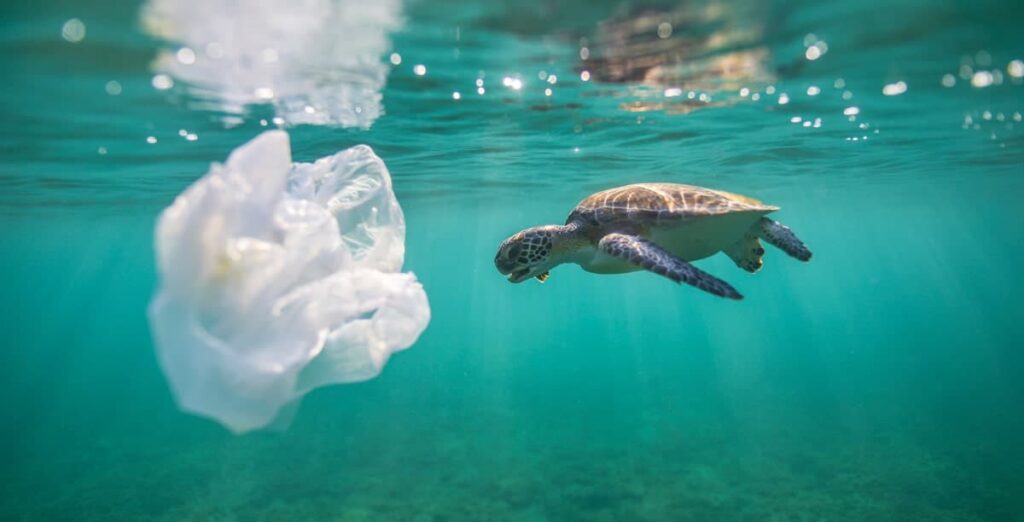
1. Global Plastic Treaty Talks End with Limited Progress in Ottawa
In the heart of Ottawa, hopes were high for groundbreaking strides in combating plastic pollution as nations gathered for treaty talks. However, the outcome fell short of expectations, with negotiations yielding only modest advancements. Disagreements over regulatory measures and funding stifled comprehensive agreements, leaving key issues unresolved.
Despite some nations expressing dedication to curbing plastic waste, economic interests prevailed for others, impeding significant breakthroughs. This outcome underscores the formidable challenges in aligning diverse priorities on a global scale. As the world grapples with the urgent need to address plastic pollution, collaborative efforts remain imperative to chart a sustainable path forward.
Thank you for your generous gift that will help us continue the production of this weekly, free publication

2. Austria Largely Bans the Import and Processing of Shark Products
AUSTRIA. For years, species and marine conservation organisations such as Sharkproject International (www.sharkproject.org) have pointed out the urgent need for politicians and businesses to take action. This also directly affects landlocked countries such as Austria. The Austrian parliament called on the federal government to implement an import ban on shark products.
After intensive examination by the competent authorities, this was implemented with the Species Trade Supplementary Ordinance (Federal Law Gazette II No. 107/2024) published on 18 April 2024 and the trade and import restrictions defined therein: The import, trade, and processing of sharks and shark products are now only possible in Austria in exceptional cases with an explicit import license.- This means the end of questionable cosmetics, sexual enhancers, shark fin soup, and shark steaks in Austria.
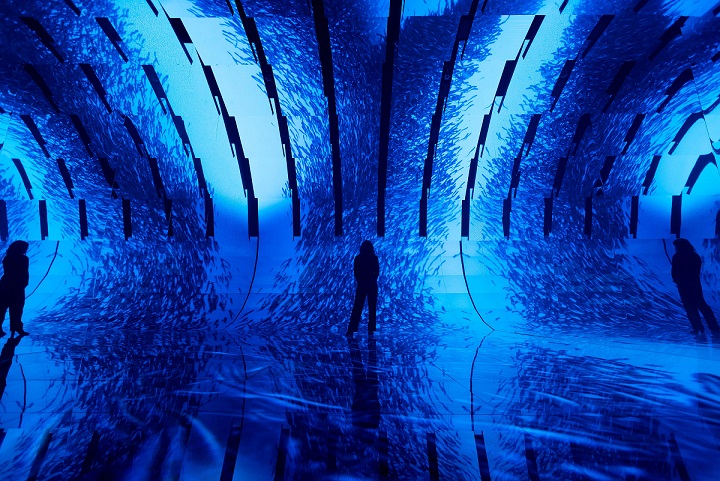
3. Chicago’s Museum of Science and Industry Examines the Impact of Ocean Plastic Pollution
CHICAGO, Ill. The “Blue Paradox Exhibit” offers a close-up look at the result of decades of plastic usage, which has become essential for modern life. It is known that every part of plastic production from fossil fuels leads to water and air pollution. However, it is now being discovered that the way plastics break down is causing problems that hit closer to home in food supplies and even the bloodstream in ways never thought possible.
The exhibit details current plastic pollution in the Great Lakes plastics, and in a separate room, guests see how individual behavioral changes can make significant impacts. The Blue Paradox exhibit provides ideas on reducing and reusing plastics to curb the growing tsunami of plastic waste. Americans are estimated to use and discard about 108 pounds of plastic annually.
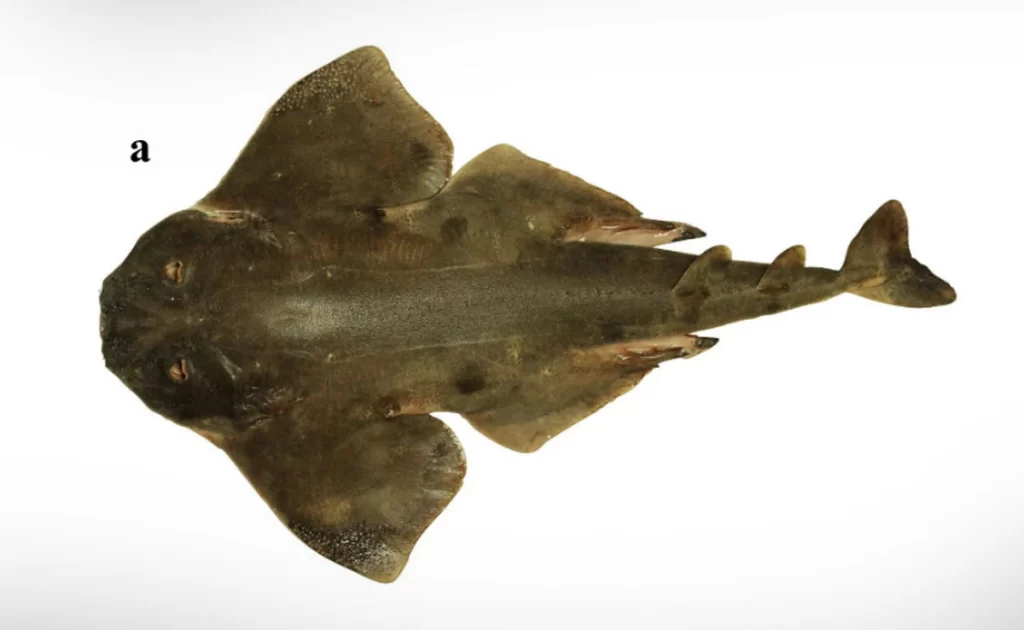
4. Missing Since the 1800s, Ocean Predator Appears in Fishers’ Net in Chile
CHILE, Researchers were thrilled to confirm they had stumbled upon two Squatina armata, also known as Angelote in Spanish and Chilean angel shark in English. In 1887, a researcher described the Chilean angel shark, a small, flat shark resembling a ray that dwells in shallow coastal waters. According to NOAA, these enigmatic creatures are “nocturnal bottom-dwellers,” spending most of their lives buried within the coastal sediment’s sand and mud.
“Recent taxonomic studies on angel sharks … with this updated morphological characterization of the Chilean angel shark, questions on geographic range, estimations of abundance, and real incidence in landings can be clarified to ultimately inform better conservation practices of this critically endangered species and other angel sharks on the Pacific coast of America,” the researchers said. The sharks were caught near Playa Seremeno in northern Chile on the Pacific coast.
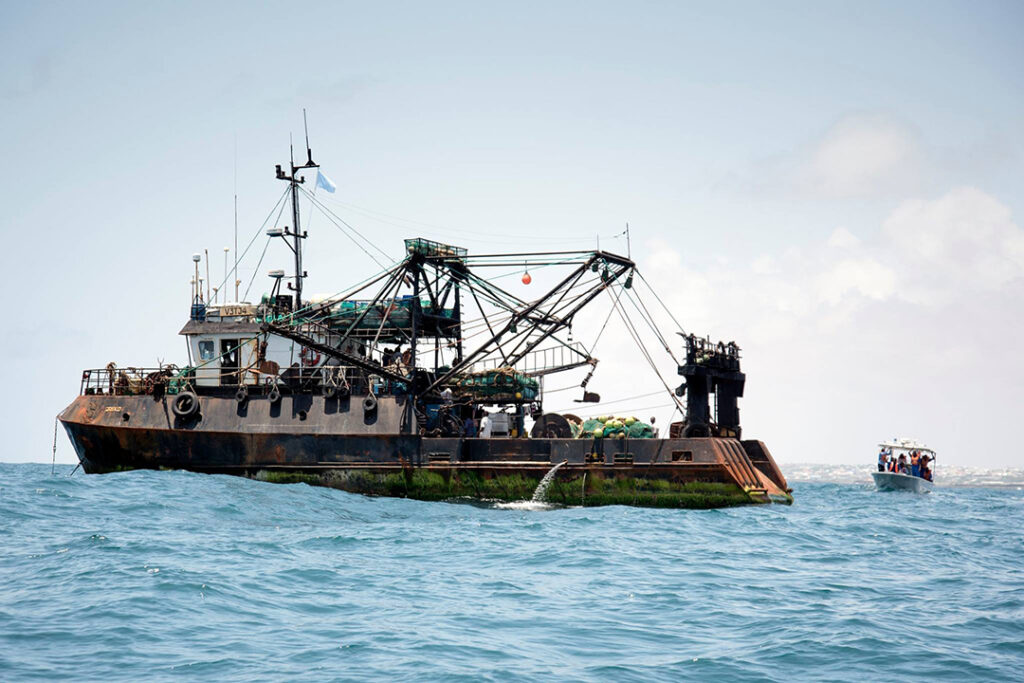
5. Study Exposes Illegal Fishing by Chinese Vessels in Tanzanian Waters
TANZANIA.The Environmental Justice Foundation (EJF), a UK-based nonprofit fighting for a global secure environment, released the findings of its investigation implicating Chinese vessels with several cases of illegal, unreported, and unregulated fishing and human rights abuses. China denies the allegations. The investigation uncovered many illegalities, including shark finning.
EJF interviewed crew members who reported that sharks were finned systematically across the vessels, with their fins removed and their bodies thrown back into the ocean. The investigation also uncovered mistreatment and abuse of crew members, many of them Indonesians and Filipinos. EJF’s revelations come when Tanzania is reported to lose billions of money due to illegal fishing in its lakes and oceans, with the Controller and Auditor General (CAG) Charles Kicheere urging authorities last week to take appropriate measures to curb the loss.
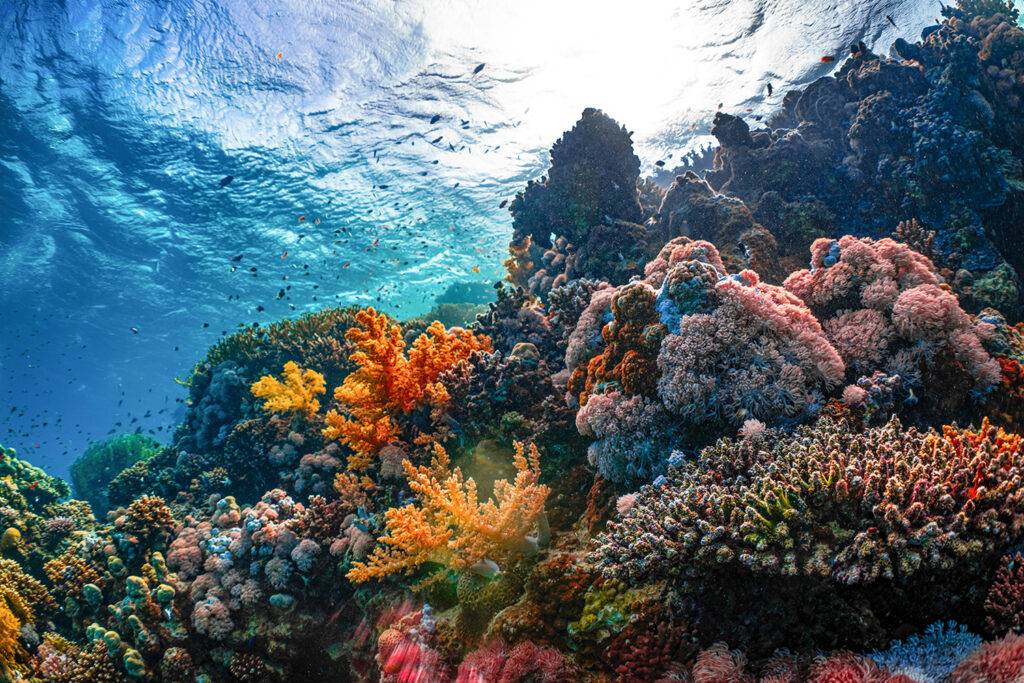
6. Coral Restoration Project Unveiled in the Red Sea
NEOM, SAUDI ARABIA. At King Abdullah University of Science and Technology (KAUST), scientists have begun work at the KAUST Coral Restoration Initiative (KCRI)’s first nursery. KCRI is the largest coral restoration project in the world. It represents a significant step towards restoring reefs globally, with a primary nursery officially in operation and a second facility in development, both in the Red Sea.
The nursery, on the coast of NEOM in northwest Saudi Arabia, is set to transform coral restoration efforts with a production functioning as a pioneering pilot facility. This facility is a precursor to a more ambitious project: the world’s largest and most advanced land-based coral nursery. Located at the same site, this advanced coral nursery will boast a ten-fold larger capacity to nurture 400,000 corals annually. Construction is expected to reach completion in December 2025.

7. Greece Says Will Prohibit Bottom Trawling in All Marine Protected Areas
ATHENS – Faced with criticism that the country isn’t doing enough to protect marine habitats, Greece’s New Democracy government said it would ban bottom trawling, in which nets are dragged on the ocean floor, in Marine Protected Areas. The protection won’t happen until 2030, giving fishing vessels almost seven more years to take what they can from the waters—no explanation given for the delay.
Oceanographic magazine reports that Greece will end bottom trawling in its three national marine parks, one of which will be the largest in the East Mediterranean Sea, by 2026 and across all its protected ocean areas four years later. That would make Greece the first country in Europe to prohibit bottom trawling. The government also plans to protect two large swathes of the Aegean and Ionian seas, creating the Ionian Marine National Park and the South Aegean Marine Protected Area (MPA).

8. More Than 100 Beached Pilot Whales Rescued
MELBOURNE, Australia — More than 100 long-finned pilot whales that beached on the western Australian coast Thursday have returned to sea, while 29 died on the shore, officials said. Local whale researcher Ian Wiese joined hundreds of volunteers who helped rescue the whales.”When I first arrived, I think 160 were in the water — almost out of the water — and a couple of hundred people were with the whales.
They were trying to comfort them and ensure their heads were out of the water so they could breathe. And then after an hour or so, all of a sudden, the ones in the water still alive left and went out to sea,” Wiese said. Marine scientist Holly Raudino said tissue samples had been taken from the dead whales to exclude potential causes of the stranding, including infectious disease.
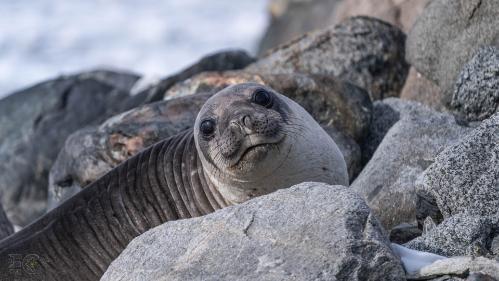
9. Ozone Hole Brings New Threat to Antarctic Life: Animals and Plants Battling Increased UV Radiation Exposure
UNIVERSITY OF WOLLONGONG, Australia. A new paper (see link below) has revealed data on ozone depletion over Antarctica and how plant/animal life may be adapting. Until four years ago, Antarctica’s ozone depletion peaked in September and October when most plants and animals are dormant and protected under snow and ice cover. Recently, ozone cover has remained depleted through December, the start of summer, thus increasing UV radiation and exposure to anarctic life.
For comparison, the UV index in the 1970s was around six at its highest, and now it’s reaching 14, the equivalent of mid-summer in San Diego. This time of year is peak breeding season for penguins and seals, and increased UVs could harm chicks and pups. This research highlights the need for collective and individual responsibility to preserve the environment and climate for current and future generations by reducing carbon emissions.
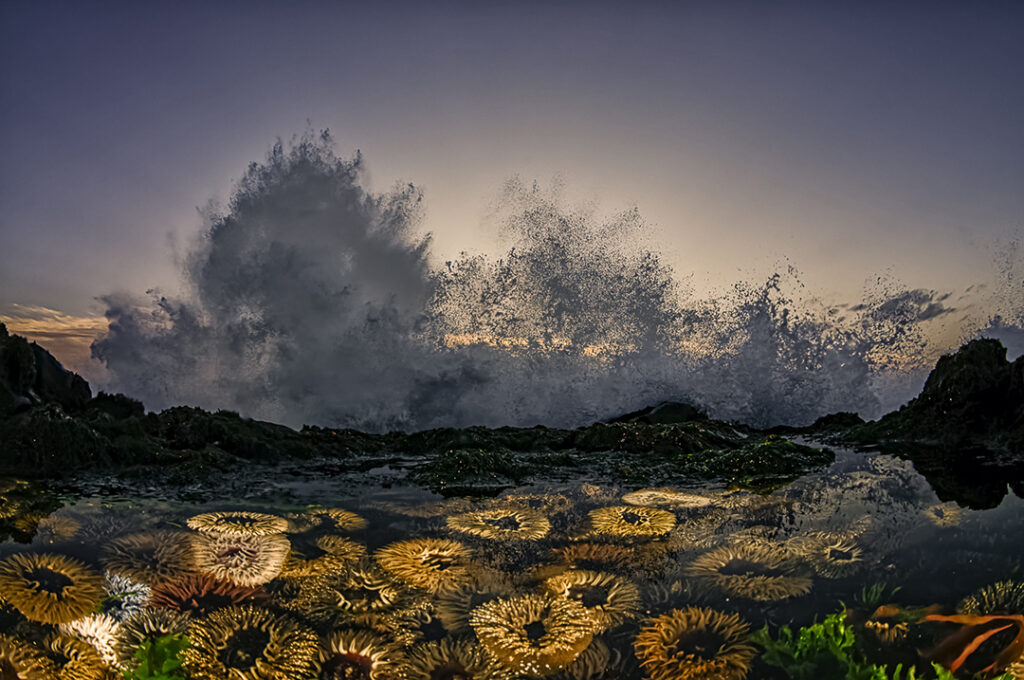
10. Conference Identifies Priorities for Remainder of Ocean Decade
The Ocean faces increasing pressure from marine pollution, overfishing, warming ocean temperatures, and acidification, among other threats. One major initiative under the UN umbrella to address these challenges is the UN Decade for Ocean Science for Sustainable Development. Delegates at this year’s Ocean Decade Conference adopted the Barcelona Statement, which provided input into ten draft white papers containing further priority details.
The three priorities identified in the Barcelona Statement are ocean knowledge and science generation to inform management decisions, improved infrastructure, including marine pollution monitoring and ocean observations, and cross-cutting issues such as co-designing initiatives and embracing all knowledge systems. The 2024 Conference gathered representatives from governments, universities, the private sector, and NGOs to reflect on progress and set a collective vision and joint priorities for the rest of the Decade.
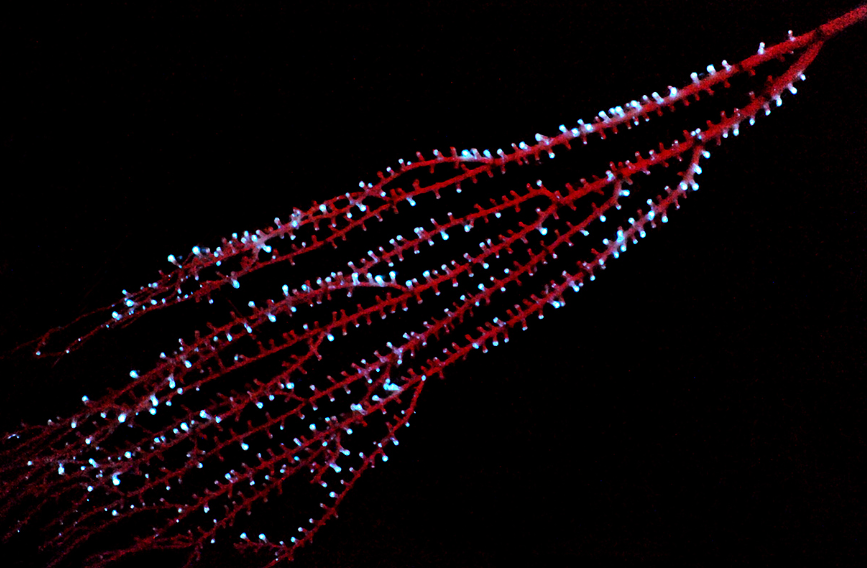
11. Sea Creatures Began to Glow Half a Billion Years Ago
Some three-quarters of all undersea animals can generate their light, but the origin of this ability has been shrouded in mystery. Research reported today in the Proceedings of the Royal Society B suggests the trait originated in octocorals —an ancient, diverse group of marine invertebrates — nearly 300 million years earlier than scientists had thought.
Most bioluminescent animals use the same primary chemical reaction: an enzyme, luciferase, adds oxygen to a compound known as luciferin, producing light as a byproduct. It’s a “breakthrough” for understanding the evolution of bioluminescence, says Edith Widder, a marine biologist and head of the Ocean Research & Conservation Association who specializes in bioluminescence. The findings demonstrate “how much we still have to learn” about the creatures illuminating Earth’s oceans.
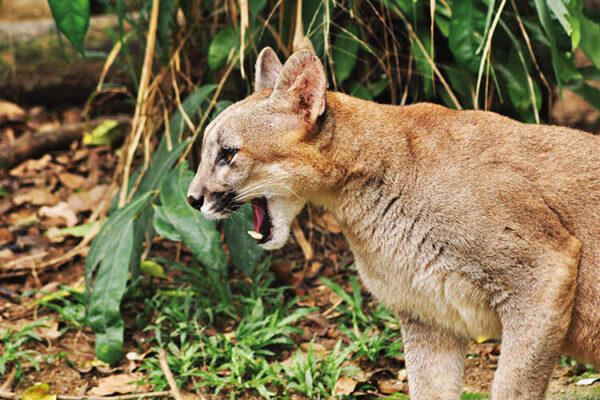
12. Who Comes First, People or Wildlife? Researcher Tracks Shifting Attitudes
BREWSTER, Massachusetts. Do we place human life above the well-being of wildlife? Dr. Jennifer Jackman, professor of political science at Salem State University, recently presented on the subject. She and her colleagues are working to understand people’s perceptions of wildlife and how it influences their lives. She discussed wildlife management, animal rights, hunting, and the value of animal companionship. In surveys conducted on Cape Cod by Jackman’s team, participants were divided into three categories: voters, tourists, and fishermen.
Overall, voters and tourists opposed the lethal management of predators like coyotes and sharks, understanding their value to local ecosystems. Fishermen took a slightly different stance. They placed a lower value on the ecological role of certain animals, specifically seals. “I hope that the research can be used to promote coexistence with wildlife,” Jackman said, and “emphasize the importance of these animals to the ecosystem.”

13. The First Glow-in-the-Dark Animals May Have Been Ancient Corals Deep in the Ocean
A new study shows that glow-in-the-dark coral may have been the first organisms to glow as long as 540 million years ago. Andrea Quattrini, co-author of the study, said, “Light signaling is one of the earliest forms of communication we know of—it’s essential in deep waters.”. She said some animals use it to startle predators, and others lure prey with it. Still others use bioluminescence to attract mates.
Certain species of coral light up when bumped and may glow various colors, resembling waving reeds, fingers, or bamboo stalks. Their entire bodies may even light up. This remarkable trait is the result of a chemical reaction. Researchers used genetic data from 185 species of the coral studied and found that the ancestors of glowing soft corals lived 540 million years ago, much longer than initially thought.
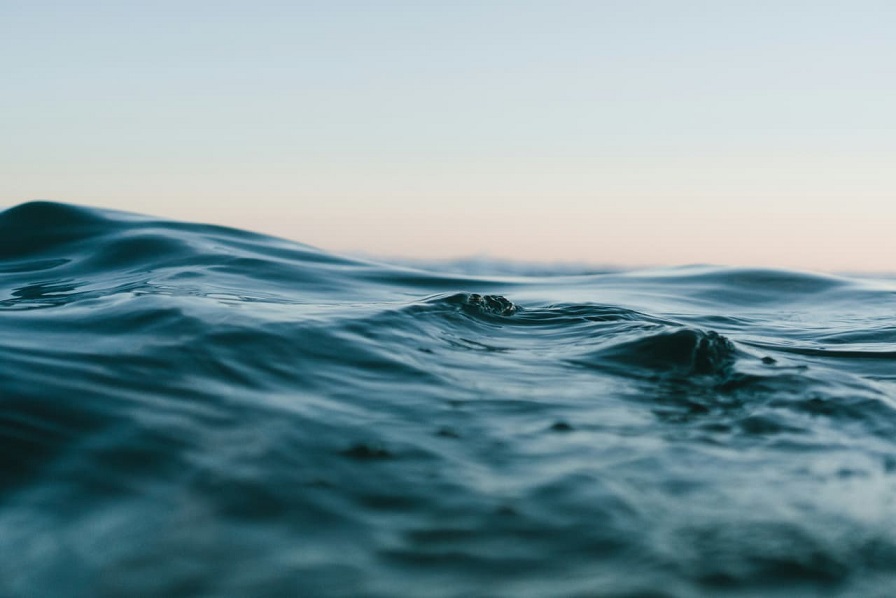
14. Packard Foundation Pledges 480 Million USD to Ocean Conservation Over the Next Five Years
ATHENS, Greece. Announced during the closing ceremony of the Our Ocean Conference this year, the David and Lucile Packard Foundation is contributing 480 million USD dedicated to ocean conservation. Meg Caldwell, interim vice president of environment and science, wrote, “Ocean science and conservation are core to the Packard Foundation’s DNA. The next phase of the Packard Foundation’s commitment to ocean health, the 10-year (2023-33) Ocean Initiative, aims to protect and restore ocean ecosystems for people and nature, now and in the future.”
The foundation’s initiative will primarily address three issues: overfishing, habitat loss, and climate change, focusing on the countries of Chile, China, Indonesia, and the US, which are particularly dependent on ocean resources. The funding will encourage ocean communities to work on solutions to end overfishing and human rights abuses in the industry and governing ocean protection initiatives.

15. The Cost of Fear: How Perceptions of the Deep Sea Hurt Conservation
We know less about the deep sea than we do about the moon’s surface, according to Sir David Attenborough on BBC’s Blue Planet (2001). Humans have feared the deep and its inhabitants for centuries. Shocking photos and videos of strange creatures in the dark abyss make it seem eerie. The Australian Museum displayed a terrifying “oversized model anglerfish” that circulated the web, passing as real.
The fish actually doesn’t exceed 12 inches! Many animals – crabs, coral, fish, etc. – in deeper depths- look like those in shallow waters. The real fear should be the threats that deepwater drills, fishing, mining, and pollution pose. Fortunately, with the help of resources like NOAA’s Deep Ocean Education Project and deep-sea dive live streams, humans are becoming less fearful and more knowledgeable and concerned about protecting the deep sea.
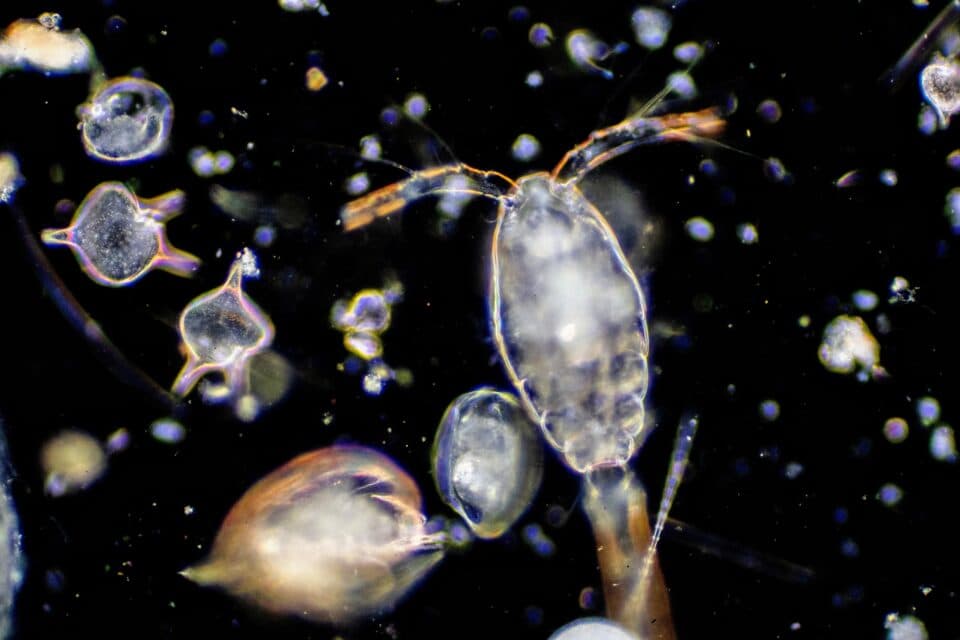
16. Plankton Help Predict Ocean Biodiversity Losses
Marine plankton, particularly the single-celled organisms known as foraminifera, have populated the oceans for hundreds of millions of years. These microscopic, hard-shelled creatures are more than just specks in the vast ocean; they are fundamental to the marine food chain and serve as a historical archive that helps scientists predict changes in global biodiversity related to our warming climate.
Recently, an extensive study utilizing a high-resolution global dataset of planktonic foraminifera fossils – one of the richest biological archives available – has revealed crucial insights. Researchers have discovered that subtle changes in the composition of these marine communities consistently preceded significant environmental stresses, leading to mass extinctions. These shifts act as an early warning system for potential future extinctions. What to read the rest of the story? Click the link below!

17. Florida Lawmakers Pass Ban on Intentional Balloon Releases
State lawmakers in Florida have passed a bill, HB321, to ban intentional balloon releases and charge them as littering infractions. Jon Paul Brooker, director of Florida Conservation at Ocean Conservancy, said, “The ingestion of a single piece of balloon has the potential to kill a seabird, which shows why even one intentionally released balloon is one too many.”
A study by Ocean Conservancy scientists found that about one in three seabirds that consumed just a single piece of a balloon would die from eating that debris. Ingested balloons can block animals’ digestive tracts or keep them from feeling hungry, leading to starvation. Balloons also pose an entanglement risk to wildlife. Ocean Conservation Society found that balloons are the top cause of marine debris-related death for seabirds.
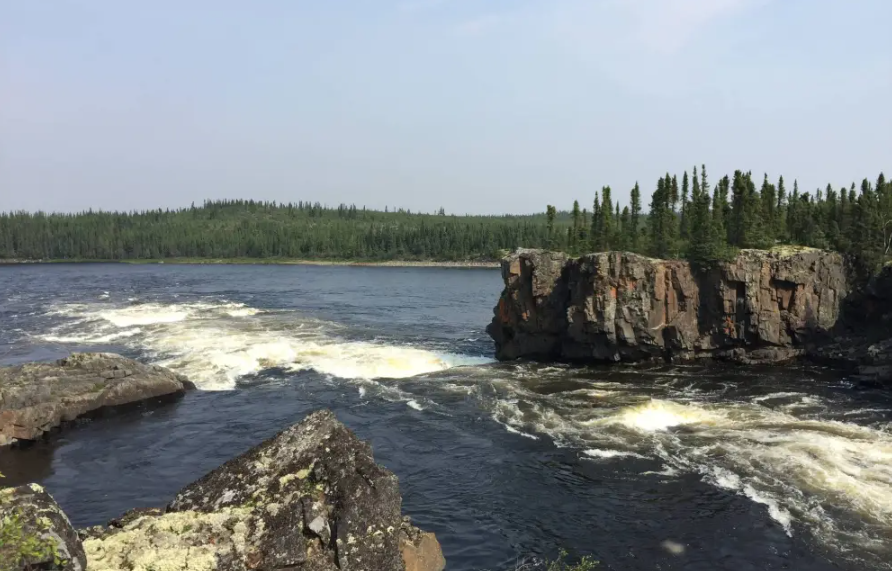
18. Natural Habitat and Biodiversity Conservation Efforts Had Stalled Under Manitoba’s Previous Government — Will the NDP Make Good on Its Promise to Reverse Course?
MANITOBA. When Manitoba’s New Democratic Party (NDP) ran for office last fall, its platform included policy promises to prioritize climate action. Among them was a commitment to 30-by-30 conservation targets, which aim to protect 30 percent of the world’s lands and waters by 2030. Now, six months into its tenure, with its first budget in the books, the Manitoba NDP’s plan to meet 30-by-30 targets is beginning to take shape.
The new government has taken steps to add to the protected areas network. Environment and Climate Change Minister Tracy Schmidt announced in an interview that the province recently partnered with the City of Winnipeg to protect four urban parks: the Seine and LaSalle River corridors, Crescent Drive Park, and the Rotary Tall Grass Nature Park in northeastern Winnipeg. Schmidt said the areas total three square kilometres, adding that “every little bit counts.”
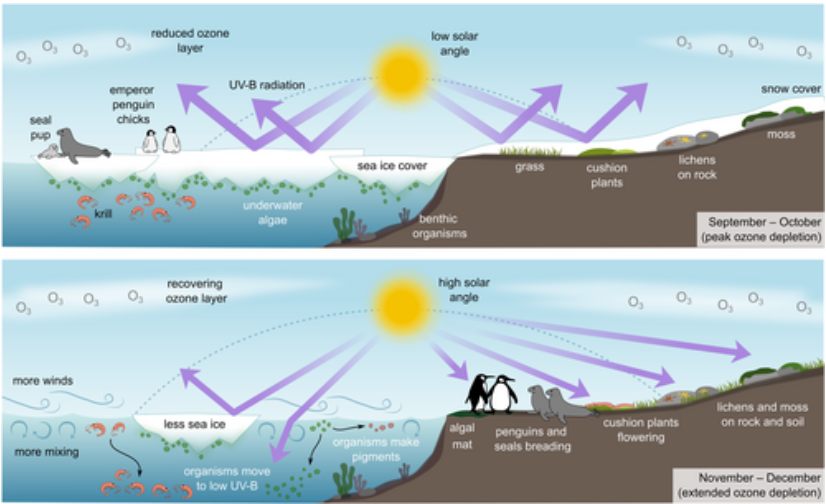
19. Extended Ozone Depletion and Reduced Snow and Ice Cover—consequences for Antarctic Biota
Stratospheric ozone, depleted in recent decades by releasing anthropogenic gases, is critical for shielding the biosphere against ultraviolet-B (UV-B) radiation. Although the ozone layer is expected to recover before the end of the 21st century, a hole over Antarctica appears yearly. The ozone hole used to close before the onset of Antarctic summer, meaning that most biota were not exposed to severe springtime UV-B fluxes. However, in recent years, ozone depletion has persisted into December, which marks the beginning of austral summer.
Early summertime ozone depletion is concerning: high incident UV-B radiation coincident with snowmelt and the emergence of vegetation will mean biota is more exposed. Climate change, including changing wind patterns and strength and particularly declining sea ice, will likely compound UV-B exposure of Antarctic organisms through earlier ice and snowmelt, heat waves, and droughts.
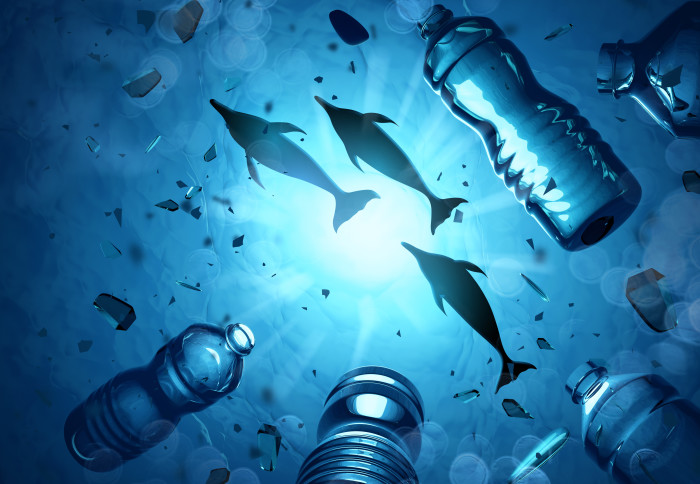
20. The Future of Plastics Will Determine the Future of Oil Demand Oil Price
NEW YORK – The UN Global Plastics Treaty negotiations aim to curb plastic pollution by reducing plastic use globally. While noble, the goal may be harder to achieve than it seems. Plastics are a huge contributor to making modern healthcare as safe as it is, and they make an equally massive contribution in making a lot of foods affordable for more people – simply because plastic packaging reduces the costs of transporting and storing these foods.
Yet, while plastics used in healthcare are safe from bans, for now, plastics in food packaging are a target. The alternative to plastic production bans would be better disposal processes and more recycling, but recycling must be profitable for this to work, and much of it simply isn’t. The world has a plastic waste problem. Bans may solve this problem, but they would create new and potentially graver ones.
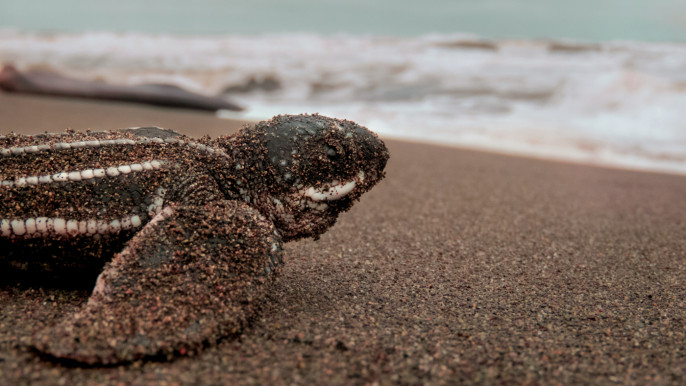
21. Arannayk Forms Sea Turtle Hatchery, Conservation Group in Cox’s Bazar
DHAKA, Bangladesh — Biodiversity conservation group Arannayk Foundation disclosed information about many of its promising initiatives for protecting sea turtles that are crucial to the ecology of the Bay of Bengal. So far, 5,878 eggs have been preserved in nests at the hatchery, while 1,222 hatchlings have been released into the Bay of Bengal. The information highlighted various threats faced by sea turtles in the region. These include incidental capture during fishing activities, habitat degradation due to climate change, plastic pollution, and illegal construction.
Consequently, the survival of sea turtles is at risk, requiring urgent conservation efforts. The non-profit has established a sea turtle hatchery at Inani Beach in Cox’s Bazar under the “Ecosystem Awareness and Restoration through Harmony (EARTH) project. Apart from sea turtle conservation, this project also focuses on enhancing the efficiency of the Sheikh Jamal Inani National Park management authority.
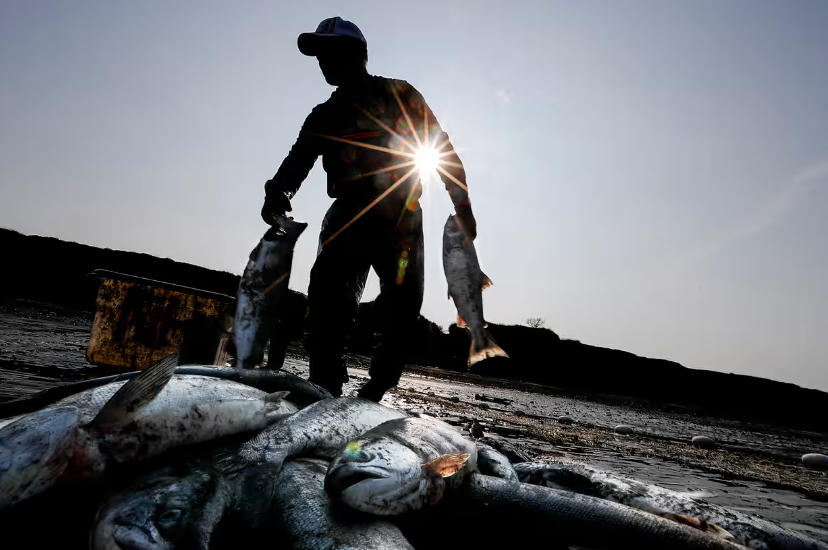
22. Alaska Has a Plan to Save Its Salmon, but Some Native Leaders Are Wary
A new approach aims to restore fish levels in the Yukon River. Some feel it unfairly targets traditional practices while failing to tackle huge losses to industrial fishing in the ocean. Earlier this month, Alaska officials announced a new plan that could revive the Yukon River’s struggling salmon population. In recent years, the 2,000-mile waterway from Canada’s Yukon Territory to the Bering Sea has seen sharp declines in its Chinook, or king salmon.
The new strategy aims to restore the number of fish that reach their northern spawning areas near the Canadian border to 71,000, up from about 15,000 that reached the Canadian border in 2023. Some tribal leaders say the closures unfairly burden Native communities, severing a crucial link to traditional culture, and that officials did not properly consult them while forming the plan.
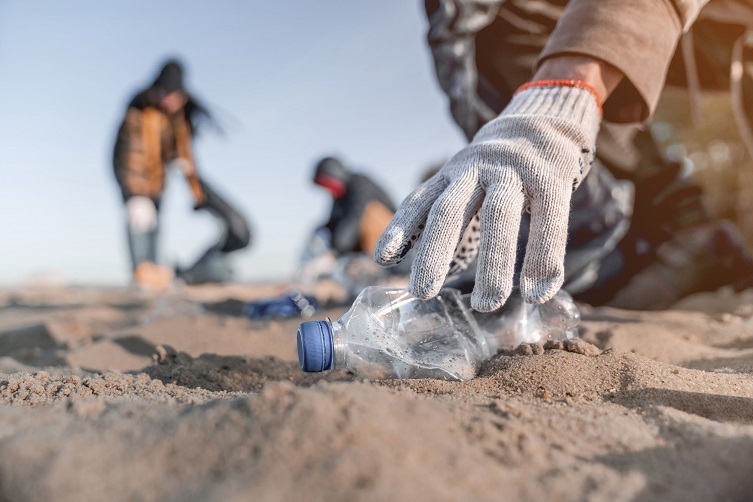
23. Engaging youth vital to tackle plastic pollution
Islamabad: The prime minister’s coordinator on climate change, Romina Khurshid Alam, stated that plastic pollution was a significant cause of environmental degradation, but tackling it was a daunting challenge because of the country’s massive use of plastic goods. She, however, said the government was committed to making the country plastic-free with the help and cooperation of stakeholders.
“Our youth, who are the frontline contingent force, can play a pivotal role in ensuring a plastic-free environment by advocating for sustainable policies, developing skills in green industries, starting or joining green businesses, and actively participating in the implementation of strategies to combat plastic pollution, which is a major source of environmental degradation in our country,” she told the concluding ceremony for the Margalla Hills Half-Marathon here. Various civil society organisations organised the 21-KM marathon to raise public awareness of climate change and plastic pollution.

24. At Plastics Treaty Talks in Canada, Sharp Disagreements on Whether to Limit Plastic Production
OTTAWA, Ontario. Nations made progress on a treaty to end plastic pollution, finishing the latest round of negotiations in Canada Tuesday amid sharp disagreements about whether to put global limits on plastic production. For the first time in the process, negotiators discussed the text of what is supposed to become a global treaty. Delegates and observers at the Intergovernmental Negotiating Committee on Plastic Pollution shifted from ideas to treaty language at this fourth of five scheduled meetings.
The most contentious idea is limiting the amount of plastic manufactured, which remains in the text despite the strong objections of plastic-producing countries, companies, and oil and gas exporters. Most plastic is made from fossil fuels and chemicals. As the Ottawa session ended, the committee agreed to continue working on the treaty before its final meeting in South Korea later this year.
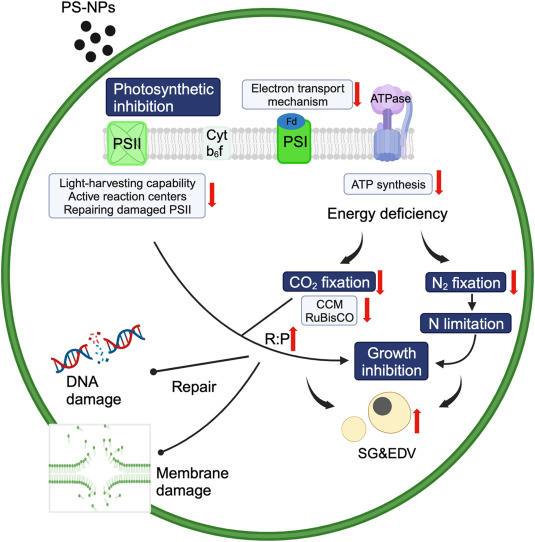
25. Nanoplastics Impair Growth and Nitrogen Fixation of Marine Nitrogen-Fixing Cyanobacteria
Do you understand and speak the language of “Scientist”? This article is for you! Nanoplastics pollution is a growing environmental problem worldwide. Recent research has demonstrated the toxic effects of nanoplastics on various marine organisms. However, the influences of nanoplastics on marine nitrogen-fixing cyanobacteria, a critical nitrogen source in the ocean, remained unknown.
Here, we report that nanoplastics exposure significantly reduced the growth, photosynthetic, and nitrogen fixation rates of Crocosphaera watsonii (a major marine nitrogen-fixing cyanobacterium). Transcriptomic analysis revealed that nanoplastics might harm C. watsonii via downregulating photosynthetic pathways and DNA damage repair genes. In contrast, genes for respiration, cell damage, nitrogen limitation, and iron (and phosphorus) scavenging were upregulated. Click the link below to get “the rest of the story.”
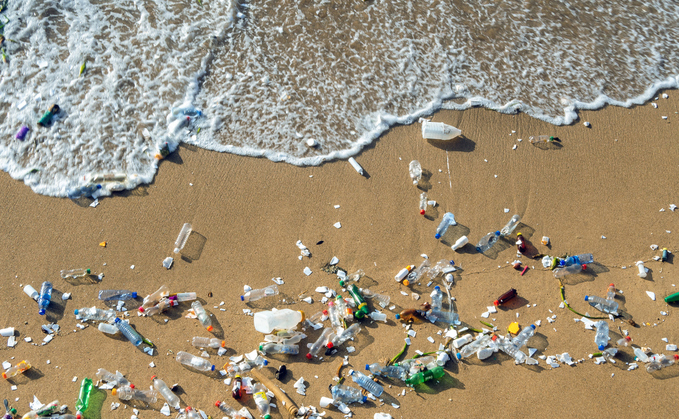
26. 37 Percent Spike in Fossil Fuel Lobbyists at UN Talks to Curb Plastic Pollution
NEW DELHI, India. According to an analysis by the Centre for International Environmental Law (CIEL), a nonprofit law group, around 196 fossil fuel and chemical industry lobbyists, including 11 from India, have registered for the United Nations negotiations on the first global treaty to curb plastic pollution in Ottawa. This is a 37 percent increase from the 143 lobbyists registered at INC-3.
The fourth round of talks on the Global Plastics Treaty (INC-4) will take place in Ottawa, Canada, from April 23 to 29, 2024. Around 99 percent of plastics are derived from fossil fuels, and the fossil fuel industry continues to clutch plastics and petrochemicals as a lifeline. The chemical and fossil fuel industries oppose cuts to plastic production, falsely claiming that the plastics crisis is not a plastic problem but a waste problem.




